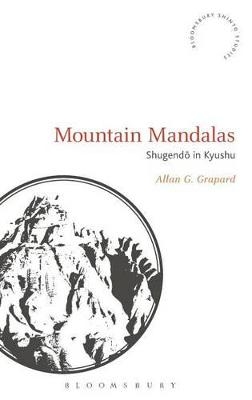
Mountain Mandalas
Bloomsbury Academic (Verlag)
978-1-4742-4900-3 (ISBN)
This book includes detailed analyses of the geography of sacred sites, translations from many original texts, and discussions on rituals and social practices. Grapard studies Mount Hiko and the Kunisaki Peninsula, which was very influential in Japanese cultural and religious history throughout the ages. We are introduced to important information on archaic social structures and their religious traditions; the development of the cult to the deity Hachiman; a history of the interactions between Buddhism and local cults in Japan; a history of the Shugendo tradition of mountain religious ascetics, and much more.
Mountain Mandalas sheds light on important aspects of Japan’s religion and culture, and will be of interest to all scholars of Shinto and Japanese religion. Extensive translations of source material can be found on the book’s webpage.
Allan G. Grapard is Professor Emeritus in the Department of East Asian Languages and Cultural Studies at University of California, Santa Barbara, USA.
Illustrations
Preface
Organization of the Book
Acknowledgements
A Note on Translation and Text
1. Shugendo and the Production of Social Space
Kyushu Island: an ignored world
The Hachiman cult’s nebulous origins
Usa: from prehistoric village to cultic city
Oracular pronouncements as divine directives
The early Heian period: Iwashimizu Hachiman
The Kunisaki Peninsula’s links to Usa
Mount Hiko
2. Geotyped and Chronotyped Social Spaces
Hachiman’s traveling icons
Mount Hiko: of swords, meteors, dragons, and goshawks
Waiting for dawn on Mount Hiko: the geotype and chronotype of heterotopia
Mount Hiko’s Sacred Perimeter: four corners and three dimensions
Altitude and altered states of mind: creating a Dojo
Mandala templates: divine planning
Geotyped and chronotyped, encoded, mandalized bodies
The visionary imperative
3. Festivities and Processions: Spatialities of Power
Mount Hiko as a socio-ritualized space
Mount Hiko’s conflicts with Mount Homan and the Shogo-in monzeki
Mount Hiko’s ritual calendar
The New Year’s shusho tsuina rite: expel and invite
The shusho goo rite: paper, pill, oath
The kissho shugi rite: sanctioning power and rank
Mountain sanctuaries awash in seawater: the shioitori rite
For the birds: the Zokei goku rite
The Matsue and Ondasai ritual festivities
Mineiri: the mandalized peregrinations
Mandalized itineraries
Practices in the mountains
The Daigyoji shrines and water
Usa Hachiman’s oracular spatialities
Kunisaki: a much-disturbed heterotopia
The geognostic realm of the lotus in Kunisaki
Coursing through the peninsula
4. Shattered Bodies, Statues, and the Appeal of Truncated Memory
Mount Hiko’s quasi-destruction and fall into irrelevance
Kunisaki: one breath away from the void of modernity
Hachiman’s return in disguise
Afterword: From Spatialities to Dislocation
Rays of light
Glossary
Notes
Bibliography
Index
| Reihe/Serie | Bloomsbury Shinto Studies |
|---|---|
| Zusatzinfo | 10 bw illus |
| Verlagsort | London |
| Sprache | englisch |
| Maße | 156 x 234 mm |
| Gewicht | 626 g |
| Themenwelt | Schulbuch / Wörterbuch |
| Geisteswissenschaften ► Religion / Theologie ► Buddhismus | |
| Geisteswissenschaften ► Religion / Theologie ► Weitere Religionen | |
| ISBN-10 | 1-4742-4900-0 / 1474249000 |
| ISBN-13 | 978-1-4742-4900-3 / 9781474249003 |
| Zustand | Neuware |
| Haben Sie eine Frage zum Produkt? |
aus dem Bereich


